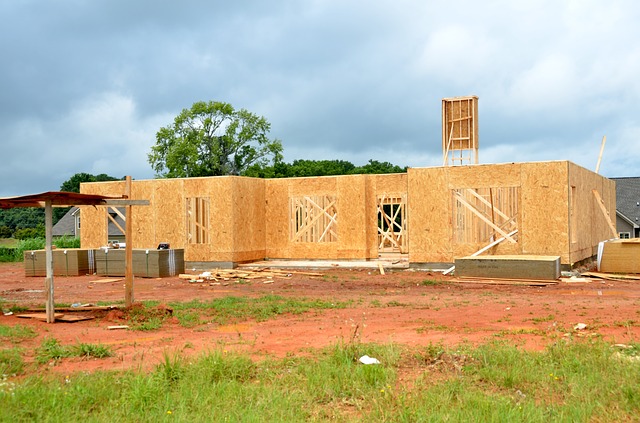Wood, steel and concrete have specific structural advantages. Each material is unique. In this article, I will describe each of them.
Concrete
Concrete allows you to design very strong and durable buildings. The use of thermal mass can help regulate the internal temperature. Prefabricated concrete is being used more and more in construction. It offers numerous benefits in terms of environmental impact, cost and speed of construction.
Steel
Steel in construction stands out for its speed and efficiency. Its relative light weight and ease of construction allows for a 10-20% reduction in manpower compared to the construction of a similar building based on concrete. Steel constructions are also distinguished by their extraordinary durability.
Wood
Wood is much lighter than concrete and steel. It is easy to use and can be customized to the user’s needs. It is durable, offers fewer thermal bridges than its counterparts and can contain prefabricated elements. It has very good structural properties and its compressive strength is similar to that of concrete.
- https://www.istudio.com.pl/o-co-walcza-frankowicze/
- https://www.plating.pl/cosplay-jako-nowe-hobby/
- https://www.martex.net.pl/blacha-trapezowa-jaki-rozstaw-lat/
What else is worth knowing about wood?
Given the variety of wood products available and the wealth of dimensions available, wood offers great design flexibility. Although it is mainly used in the residential sector (single-family and multi-family buildings, one-story and two-story buildings), it is also beginning to be used in commercial construction.
Impact of construction materials on the environment
Increasingly, the impact of a given building material on the environment is checked. CO2 emissions during production and energy consumption during construction and in the material are analysed. Manufacturers use different methods to mitigate this impact, and all building materials have complex life cycles.
Wood has the least impact on the environment. Certainly, when it comes from sustainably managed forests, it is the most sustainable material. It uses fewer natural resources and releases less pollutants into the air and water than concrete or steel.
The incorporation of recycled materials into new products is a fundamental change in construction. First of all, when it comes to products from non-renewable resources. In many cases, this will reduce the amount of energy contained in the material and add more credibility in the green building world. For example, steel may contain a high percentage of recycled materials. However, we must remember that steel production, even with a high level of recycling, remains one of the most energy-intensive industrial sectors.
Of course, some may argue that using wood can mean destroying forests. This is a reasonable approach. Indeed, a felled tree will no longer produce oxygen. Therefore, sustainable forest management is very important. Wood is a rich and renewable resource, so it is worth using it intelligently. Wood is an environmentally friendly product when it comes from well-managed and local forests. If you were to compare the structure of borate-impregnated wood with galvanized steel, steel would have 1.8 times more greenhouse gas emissions than wood. Galvanized steel also requires 83 times more water than borane treatment of wood.
Good wood
Wood is a renewable material, requires little processing and can almost always be purchased locally. This makes it a low environmental impact, provided it comes from a well-managed forest. Wood that has a history can add character and warmth to a home. For example, we can choose wood with saw marks, water marks or nail holes.
Wooden windows
Wooden windows are becoming more and more popular. While wood is not as economical as many uPVC or aluminum windows, it does have some eye-pleasing qualities. They far outweigh the disadvantages. However, they require basic maintenance. Let’s take good care of wooden windows. Remember that they can rot due to their porous nature. So let’s make sure it’s handled properly. Thanks to this, we will minimize the damage that can be caused by sun, rain and wind. We can also consider cedar. It is very resistant to weather conditions and although it will be more expensive, we do not have to care for it so much.
Let’s check the quality of glass and frames. The purity of the glass is important for the aesthetics and effectiveness of windows. There are other reasons for regular monthly checks. We need to clear the traces of rain and snow. Dust and debris can settle on various edges and creases, and rot can develop in these places later. These regular checks will also detect any other potential risks before they become serious.
When cleaning the windows, we can use a mild detergent. We must remember to rinse thoroughly, thanks to which the windows will be clean and we will prevent possible damage. Minor damage can be identified during cleaning. Then it will be easier to fix them. We do not have to be nervous right away and we will quickly fix them with fine sandpaper. Let the wood dry before sanding.












